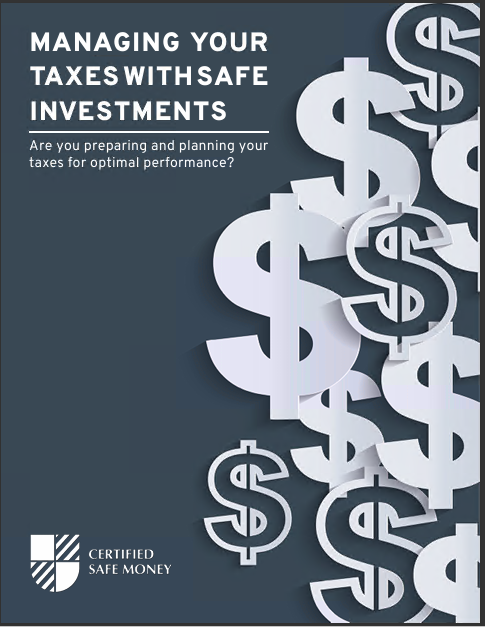Key Takeaways
-
Understanding Medicare costs early helps you budget effectively, ensuring your retirement savings are sufficient for your health care needs.
-
Being aware of hidden Medicare costs, such as premiums, deductibles, copayments, and penalties, allows you to prepare financially, reducing surprises down the road.
The Medicare Maze: Why Understanding Costs Now Matters
Preparing for retirement means more than just managing your savings and investments. One of the most overlooked but critical aspects of retirement planning is understanding the real cost of Medicare. Many retirees mistakenly assume Medicare is completely free or low-cost, only to discover unexpected expenses later on. To protect your savings, it’s essential to grasp these five important Medicare costs that you’ll face when you retire.
1. Medicare Part A: Not Always Free
Most people think Medicare Part A, which covers hospital stays, is free. That’s partially true, but only if you’ve paid Medicare taxes for at least 10 years (40 quarters). If you haven’t met this requirement, you’ll pay a monthly premium.
In 2025, if you’ve paid Medicare taxes for fewer than 30 quarters, you’ll pay a monthly premium of $518. If you’ve paid between 30 and 39 quarters, your monthly premium is $284. Even though most qualify for premium-free Part A, it’s important to confirm your eligibility well before you retire.
Watch Out for Hospital Deductibles
Beyond premiums, there’s also the inpatient hospital deductible of $1,676 per benefit period in 2025. After 60 days in the hospital, daily coinsurance costs kick in:
-
Days 61-90: $419 per day
-
Days 91 and beyond (lifetime reserve days): $838 per day
Knowing these potential costs lets you plan ahead, saving extra funds or considering supplemental coverage to avoid financial strain.
2. Medicare Part B Premiums and Deductibles: An Ongoing Cost
Medicare Part B, which covers doctor visits, outpatient care, and preventive services, isn’t free. In 2025, the standard Part B monthly premium is $185. This cost usually increases each year based on healthcare inflation, so budget accordingly.
The Deductible Factor
Apart from premiums, Part B has an annual deductible, currently $257 for 2025. After meeting this deductible, you’ll pay 20% coinsurance for most outpatient services. These costs may seem small individually but add up significantly, especially if you require frequent medical attention.
3. Prescription Drug Coverage: Prepare for the Costs of Part D
Prescription drugs often form a significant part of healthcare spending in retirement. Medicare Part D covers medications but includes several cost factors:
-
Monthly premiums (national average of $46.50 in 2025)
-
Annual deductible (up to $590 in 2025)
-
Copayments or coinsurance per prescription
In 2025, Medicare introduces a helpful $2,000 annual cap on out-of-pocket prescription drug expenses, protecting you from overwhelming medication costs. Still, budgeting for monthly premiums and the deductible is essential.
Avoid Late Enrollment Penalties
Be cautious: missing your initial Part D enrollment window (a 7-month period around your 65th birthday) can result in lifetime late enrollment penalties. This penalty increases your monthly premium permanently, underscoring the importance of timely enrollment.
4. Medicare Advantage Plans: Costs Vary Widely
Medicare Advantage (Part C) combines coverage from Parts A, B, and usually D into one convenient plan. While attractive, Medicare Advantage costs vary widely based on:
-
Monthly premiums (which differ dramatically among plans)
-
Deductibles (these can range from modest to high)
-
Copayments and coinsurance
In 2025, Medicare Advantage plans cap annual out-of-pocket expenses at $9,350 for in-network care and $14,000 combined in- and out-of-network costs. This cap can protect your savings, but be aware that you’ll still pay premiums, copayments, and possibly deductibles until you hit that limit.
Look Beyond Monthly Premiums
Choosing a Medicare Advantage plan based solely on low monthly premiums could lead to higher costs elsewhere, like higher deductibles or copayments. Carefully evaluating all aspects of a plan ensures you select the best overall financial option.
5. Supplemental Coverage (Medigap): Often Worth the Extra Expense
Original Medicare doesn’t cover all your healthcare expenses, and gaps in coverage can be costly. That’s where Medigap policies come in handy. These supplemental insurance policies help pay deductibles, copayments, and coinsurance not covered by Medicare Parts A and B.
Understanding Medigap Premiums
Medigap policies have monthly premiums that vary based on:
-
Your age when you buy the policy
-
Your geographic location
-
Specific plan benefits chosen
Although premiums might seem high initially, a good Medigap policy can significantly reduce your out-of-pocket costs, providing predictable healthcare budgeting during retirement.
When to Buy Medigap
Timing is crucial. The best time to purchase Medigap coverage is during your six-month open enrollment period, beginning the month you turn 65 and are enrolled in Medicare Part B. During this window, insurers can’t deny you coverage or charge higher premiums due to your health.
Planning Ahead: Avoid Medicare Penalties
Medicare has strict enrollment rules. Missing critical deadlines can result in hefty penalties:
-
Part B Late Enrollment Penalty: Increases your monthly premium by 10% for each 12-month period you delay enrollment.
-
Part D Late Enrollment Penalty: Calculated at 1% of the national average premium for each month you delay enrollment.
Both penalties are permanent, highlighting the need for timely enrollment and careful planning well before retirement.
Budgeting Now for Future Healthcare Expenses
The best strategy is preparing your finances long before retirement. Consider the following steps:
-
Factor Medicare premiums and out-of-pocket expenses into your retirement budget.
-
Keep an emergency healthcare fund specifically for unexpected medical costs.
-
Regularly review your retirement plan to adjust for healthcare inflation and changing Medicare costs.
By proactively budgeting, you can comfortably cover Medicare costs without sacrificing your financial security.
Taking Action: Your Next Steps for a Worry-Free Retirement
Medicare costs can significantly impact your retirement savings. But understanding these costs early provides you the chance to take effective financial actions, such as:
-
Regularly reviewing Medicare coverage and costs
-
Considering supplemental insurance options
-
Planning your enrollment carefully to avoid penalties
Smart preparation ensures you retire comfortably, knowing your healthcare costs are covered without unwelcome surprises.
Ready to Navigate Your Medicare Costs?
Being aware of these five crucial Medicare expenses helps you protect your retirement savings and health. Take the time to review your Medicare options, keep track of deadlines, and regularly update your retirement planning. This approach ensures you’re financially ready, giving you peace of mind during your retirement years.











